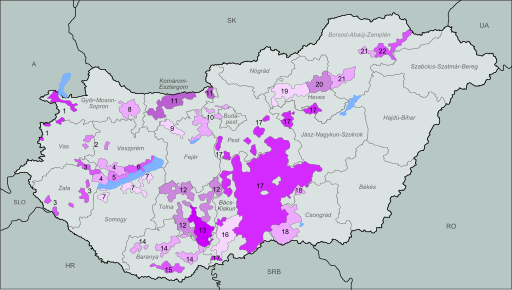|
The Feel-Good Guide to Sports, Travel, Shopping & Entertainment
|
||
| Main | Sports Events | Holidays & Observances | Pop Culture | Shopping | Travel |
|
From its first introduction by the Romans a thousand years ago -- to various invasions, world wars, and a takeover by the Soviet Union -- the history of Hungarian wine has certainly had its ups and downs. In Hungary the indigenous Kadarka and other common Central European varieties like Kékfrankos (Blaufränkisch) and Zweigelt are sharing their terroir with Cabernet Sauvignon, Pinot Noir and other international varieties.
This experimentation with new varieties, modern viticulture and updated production methods combined with the centuries old Hungarian wine traditions is bringing some excellent single and blended wines to the world table. Names like Egri Bikaver have become familiar sound in wine circles. But Hungary has not abandoned its traditiional white wines... Tokaj's Furmint and Hárslevelü, Zöld Veltlini (Grüner Veltliner), Riesling and Olaszrizling (Welschriesling) are still getting plenty of attention and Chardonnay, Sauvignon Blanc, Pinot Blanc and Pinot Gris are becoming more popular throughout the white wine regions.
Introduction to Hungarian Wine - Check out a simple map and a very good introduction to wine and its history
in Hungary supplemented with tasting notes and pronunication guides.
|

